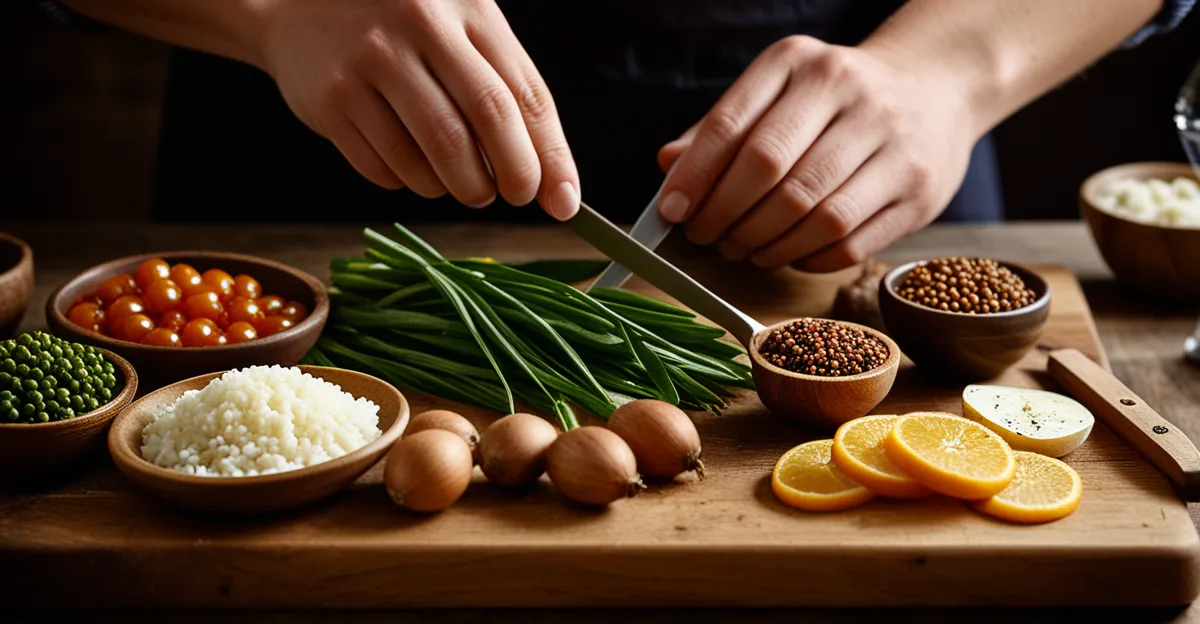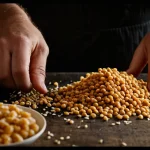Core Ingredients That Represent Authentic UK Cuisine
British food culture is deeply rooted in its use of UK traditional ingredients that reflect both historical influences and local availability. These British food staples not only define the flavor profile of many dishes but also showcase the country’s agricultural diversity and culinary heritage. Central to authentic UK cuisine are ingredients like potatoes, root vegetables, and a variety of meats and dairy products, all contributing to the distinctive taste that marks British cooking.
Regional produce and seasonality play a crucial role in shaping British meals. Many traditional dishes emphasize what is fresh and available locally, ensuring flavor freshness and supporting local farming. For example, in regions such as Yorkshire or Cornwall, root vegetables and hardy greens are prominent, while coastal areas traditionally incorporate fresh fish and shellfish. This seasonal and regional focus highlights the importance of using authentic British produce, allowing dishes to vary across the UK yet maintain a consistent connection to place.
Also to discover : What are the essential spices for a classic chicken tikka masala?
Among the hallmark ingredients that make UK cuisine unique are items like British grains such as oatmeal and barley, which have been staple foods for centuries. They form the base of many regional recipes, including traditional porridges or hearty stews. Additionally, iconic spreads and condiments (which tie into further culinary traditions) often accompany meals, further emphasizing key flavors specific to British tastes.
In sum, authentic UK cuisine depends heavily on a foundation of specific, recognizable ingredients that epitomize the country’s culinary identity. From robust root vegetables and cereals to unique animal products and dairy, these ingredients make British cooking both approachable and distinctively regional.
Also read : What are the secrets to making a hearty bubble and squeak?
Meat and Fish Traditions in British Cooking
British meats are at the heart of many traditional UK dishes, embodying centuries of culinary practice and regional preference. Among the most iconic British meats is lamb, prized for its rich flavor and often roasted or used in hearty stews. Another distinctly British meat product is black pudding, a type of blood sausage that is a staple in full English breakfasts and regional specialties. Black pudding showcases the resourcefulness of traditional cooking by utilizing a variety of ingredients to create a uniquely British flavor and texture.
When it comes to seafood, traditional UK fish such as kippers and smoked haddock stand out. Kippers are split, smoked herrings that carry a distinct smoky flavor, widely enjoyed at breakfast or in sandwiches. Smoked haddock is often featured in recipes like “kedgeree,” a dish blending fish, rice, and eggs that reflects British historical ties with India. These fish not only bring distinctive tastes but also a connection to the rich maritime heritage of the UK.
Typical British dishes featuring these meats and fish emphasize comfort and tradition. For example, a classic full English breakfast combines black pudding with sausages, eggs, and fried tomatoes. Lamb appears in celebrated dishes like roast lamb with mint sauce or shepherd’s pie, where minced lamb is baked with mashed potatoes. Meanwhile, smoked haddock is central to dishes such as Cullen skink, a creamy Scottish soup. Such meals highlight how British meats and traditional UK fish contribute depth and identity to authentic cuisine.
Cheeses and Dairy Products Unique to the UK
British dairy products hold a prestigious place within authentic UK cuisine, with traditional UK cheeses serving as some of the most recognizable symbols of British culinary identity. Among these, Stilton cheese stands out as one of the most celebrated. Known for its distinct blue veins and crumbly texture, Stilton is often referred to as the “King of English cheeses.” It enjoys Protected Designation of Origin (PDO) status, meaning it must be produced in specific counties of England to bear the name, ensuring its authenticity and heritage.
Alongside Stilton, other traditional UK cheeses such as Red Leicester and Cheddar are staples in British homes. Cheddar, originally from the village of Cheddar in Somerset, offers a range of flavors depending on aging, from mild to sharp, making it versatile for cooking and snacking alike. Red Leicester, with its vibrant orange color and slightly nutty taste, adds diversity to the British cheese palate and complements many cheese boards and cooked dishes.
The use of British dairy extends beyond cheese. Cream, butter, and clotted cream are fundamental to many classic British dishes and desserts. Clotted cream, in particular, is synonymous with the West Country and is essential for an authentic cream tea, paired with scones and jam. Butter from British farms enhances baked goods and savory recipes, lending a rich texture and flavor that is difficult to replicate.
Distinct regions boast their own dairy traditions, which helps preserve the uniqueness of these products. For example, Cheshire cheese from northwest England was one of the earliest British cheeses to gain wide recognition. Each of these traditional UK cheeses contributes not only flavor but also a sense of place and history, making British dairy indispensable in both everyday meals and festive occasions.
Preserves, Seasonings, and Spreads in UK Cuisine
Unique British foods are often defined not only by the main ingredients but also by the traditional UK flavors provided by iconic condiments and preserves. One of the most distinctive British condiments is Marmite, a thick, dark yeast extract spread known for its intense, salty, and slightly bitter taste. Marmite’s cultural significance runs deep, often inspiring passionate love-or-hate reactions. Its umami-rich profile makes it a favorite spread on toast and a clever addition to enhancing stews and soups.
Beyond Marmite, British cuisine relies heavily on a variety of sauces, chutneys, and pickles that enrich dishes with complex flavors. Classic chutneys, like Branston pickle, combine sweet, sour, and spicy elements, typically featuring chopped vegetables in a tangy sauce. These British condiments are traditionally served alongside cheese or cold meats, showcasing how preserves elevate the flavor dimension in everyday meals and festive foods alike.
Seasonings also play a crucial role in distinguishing authentic UK cuisine. Dried herbs such as thyme and rosemary are staples, often paired with roasted meats and root vegetables. Mustard—particularly English mustard—adds sharpness and heat, providing balance in sandwiches and sauces. The use of vinegar-based pickles adds acidity and preserves regional produce, ensuring year-round availability of these flavors.
Together, these preserves, seasonings, and spreads form the backbone of many British plates. Familiarity with Marmite and other traditional UK flavors deepens appreciation for the depth and heritage embedded in British food staples, making them essential to understanding the culinary identity of the UK.
Produce and Grains Integral to Regional Dishes
British root vegetables and UK grains are foundational British food staples that deeply influence regional cooking styles. Potatoes are perhaps the most ubiquitous UK traditional ingredient, appearing in classic dishes from mashed potatoes in shepherd’s pie to roasted potatoes served alongside Sunday roasts. Swedes (also known as rutabagas) and parsnips add earthy sweetness and are key to many hearty vegetable medleys, especially in northern regions where hearty, warming food is vital during colder months.
The importance of authentic British produce extends to leafy greens and other vegetables native or long cultivated in the UK. Cabbage, kale, and leeks frequently accompany meat and fish dishes, providing textural contrast and nutritional balance. These vegetables’ seasonal availability reinforces the cultural practice of sourcing fresh, local ingredients to maintain authentic flavors and support regional agricultural traditions.
Grains such as oatmeal and barley stand out as distinctive UK staples. Oatmeal is commonly used in porridges and baking, celebrated for its simplicity and nutritional value. Barley finds its way into soups and stews, thickening dishes while imparting a nutty taste. These grains serve as more than filler; they root dishes in rural British heritage and highlight the agrarian past that shapes today’s unique British foods.
Together, these British root vegetables and UK grains underscore the emphasis on seasonality and locality that defines much of traditional UK cuisine, illustrating how produce and grains truly embody the spirit of authentic British cooking.
Sweets, Fruits, and Baking Essentials in British Food
British desserts owe much of their character to traditional UK fruits and time-honored baking ingredients that have long been part of the country’s culinary fabric. Commonly used dried fruits like currants and sultanas are essential British baking ingredients. They provide natural sweetness and texture to a variety of classic recipes, including fruitcakes, Christmas puddings, and hot cross buns. Their inclusion reflects historical preservation methods where dried fruits were prized for their long shelf life and concentrated flavors.
These unique British foods extend beyond dried fruits to fresh options like gooseberries and blackcurrants, frequently featured in tarts, crumbles, and jams. The tartness of these fruits offers a perfect counterbalance to the richness of creamy puddings or buttery pastry, showcasing the harmony achieved by combining traditional UK fruits with baking staples.
Classic British desserts such as sticky toffee pudding and treacle tart also emphasize the importance of specific British baking ingredients, including golden syrup and suet. Golden syrup lends a luscious caramel depth, while suet—rendered fat traditionally from beef or mutton—creates tender, moist textures in pies and puddings, underlining the unique role animal products play in British baking traditions.
Together, these fruits and baking essentials form the backbone of many cherished sweet dishes. They highlight the delicate interplay of flavor, texture, and heritage that defines iconic British desserts, and they remain vital to preserving the authenticity of British culinary heritage.









